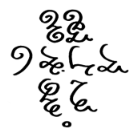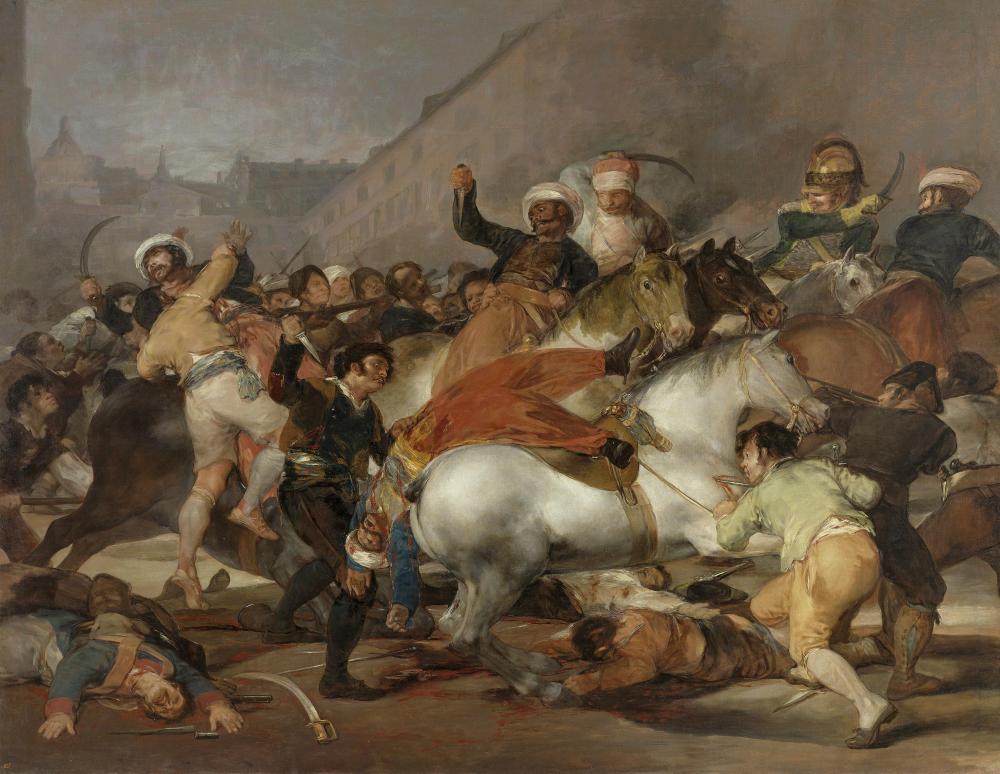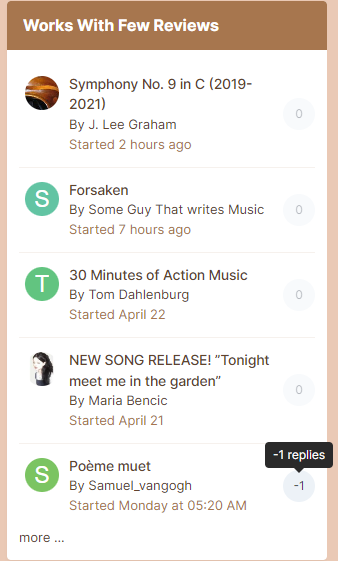Leaderboard
Popular Content
Showing content with the highest reputation on 05/03/2023 in all areas
-
Here is present three works as arrangements/interpretations on John Stanley's voluntaries for solo organ as works for string orchestra (and solo violin(s)). I found these pieces in a youtube video with the score and immediatly saw the potential for arranging it as orchestral works. Voluntary in G minor (op.5 no.7) in two movements. Video: Voluntary VII Original Organ Version Voluntary in D minor (op.5 no.8) in three movements as a concerto for two solo violins with strings accompaniament. (I especially like the outcome of the 2nd movement) Video: Voluntary VIII Original Organ Version Voluntary in D minor (op.6 no.5) in three movements. Video: Voluntary V Original Organ Version2 points
-
This particular fugue, whose final version has been transposed one half step down from the original, has been the result of a rapid burst of creativity that often comes and goes in waves around this time of the year. Even though it was finished before midnight two days ago, the thought process of deciding on an extramusical title has taken a little longer than usual this time. In the end, I have dedicated this humble work of mine to the marvellous and everlasting art of Spanish painter Francisco de Goya, in commemoration of his famous oil on canvas "The charge of the Mamluks" which, as we know, depicts the insurrection of the people of Madrid against invading Napoleonic troops in May 2nd 1808, this exact date 215 years ago. The title itself, which roughly translates as "The unrelenting night train" is meant to evoke the profuse skirmishes that took place before the Puerta del Sol as the French colonial cavalry charged against the revolting crowds, thus igniting the first instance of bloodshed in what would come to be the Spanish War of Independence. Here's a royalty-free picture of this iconic painting among Goya's many masterpieces: Following the continued advice of some among my audiences, who suggested relieving the density of the counterpoint at certain points within my fugues, I have finally decided to try out this method, et voilà! I honestly can only say I could not possibly be happier with the result. How stubborn I was in keeping the full weight of the contrapuntal texture throughout the vast majority of my works in spite of my dear viewers' counsel! Thankfully, the wall encircling my mind has now been breached by these new perspectives, which I will henceforth apply to upcoming future fugues of mine. Enjoy!2 points
-
Yes the title is parenthesis. It intends to present something unspeakable and speechless. I had other intentions at first but do not dare to speak it out. The piece is composed 10 years ago when I was a naive teen. The structure is simpler in a ternary structure. The recording is also recorded 2012 by myself in my school’s music room. You can hear the school alarm sound at the near end!! It’s also full of slips and wrong notes. But I cannot find or produce a better recording. This recording is so honest and pure. Even now I can play it much better in terms of technique, I can never produce that honesty anymore, so I will just retain it here. Without @Omicronrg9’s encouragement, I would not post the piece, thank you Daniel! Hope you enjoy the piece, and I welcome commentaries and comments on it. Thank you and have a nice day! P.S. I have provided the YT link here in case some one loves to visit my channel!1 point
-
My Spaghetti Western style orchestral piece. This is actually the last piece I'll ever do with my now ten-years-old PC, as tomorrow I'm finally assembling my new one. Let me know what you guys think about this.1 point
-
I has a lot of troubles uploading this lol. Im trying impressionistic instrumentación, I always loved how Debussy and Ravel uses the orchestra and I wanted to do something similar. Also, any tips for instrumentation? The piece is not complete tho1 point
-
It finally happened, yall! Huge deal for me and a really really important passion piece about my thankfulness for being able to study music in college. There are a lot of things I want to improve moving forward, but I hope everyone enjoys. Lots of passion between every collaborator in this premiere. I hope to hear it played again / have this lead to some things, but this was pretty special for me. Let me know your thoughts! Perusal Score: https://www.dropbox.com/s/c90o8gsfxu7xgsg/Desert Tales - Full Score.pdf?dl=0 Recording:1 point
-
Compositionally, it's far from bad. One thing, which is probably just a personal preference, is that nothing really happens. It's just sounds and effects. It would be more fitting as a soundtrack than a standalone piece. (maybe that's what it was, idk). The orchestration is very good though. The main problem is the engraving. For one, I think you could easily merge some staves to save space on the score. You have only one clarinet in Bb? Conventionally, there would be two, and then the second might double as bass clarinet, but that is just convention. I don't know why the bass clefs for horns come a measure late, those might as well be at the start. Also, the vibraphone stems are for some reason all facing upward, stems face down when at the middle line or above. I also find the "chg. intr." for the vibraphone and standing bell to be redundant on the first page. You should specify in text the flutter tonguing for the flute, because as it is it's ambiguous whether you want them to retongue every note or fluttertongue. Also, tremolo notes are not tied. They may be slurred, but not tied. Keep up the good work1 point
-
1 point
-
I try to use the dotted eight note - sixteenth note motif throughout, in terms of continuity I definitely agree that more needs to tie the sections together. I don't often write music with any narrative significance, so I'm not sure myself what the ending represents. And in my opening description, it's more intended to influence tone and enforce that the emphasis is not on the short note. They should still be played to that duration.1 point
-
As always, thank you so much for your input, Henry. Regarding the transcendence of Goya's work, there are indeed many parallelisms between him and Beethoven. Both eventually developed total deafness, were extensively prolific within their respective artistic fields and loved to experiment to a degree unseen up to that point in Western artistry, in spite of which both were quite successful throughout most of their career. They were also contemporaries - to a certain extent, since Goya's birth predates that of Beethoven by roughly 25 years or so, even though he died the same year as Schubert (that is, the year following Beethoven's own passing). In the field of pictoric arts, Goya could indeed be qualified to be as revolutionary as Beethoven, since he worked on several styles at the same time. In his later years, he produced a collection of artworks known as the Pinturas Negras (definitely worth checking out - even if they migt seem "shocking" at first) that far anticipate the vanguard artistic movements of the 20th century's first half.1 point
-
This is my original composition for piano solo. https://www.youtube.com/watch?v=D7jDdP4iurY&ab_channel=LexShadow1 point
-
Hi @Samuel_vangogh, This is enjoyable for me! B.15-17 definitely reminds me of the impressionistic pieces with the flux in the accompanying voice. I wish it's longer! I love the harmony in b.6-7 as well! For me the oboe part is very beautiful. Except I may use cor anglais to replace it since the low range of oboe is very difficult to control especially in a low volume. (Yea I'm quoting Young Composers Wiki here!) Also this makes the passage like the end (b.20-21) more beautiful with a cor anglais's high range! I suggest you should add more slurs for the woodwinds and strings to indicate the breathing and bowing, especially when the character of this piece is mosaic instead of a Baroque one. I agree with Vince b.8 is odd. Will you use rubato there with more varieties of rhythm even the note E will not be changed? I am thinking of Japanese flute or Chinese Dizi there. Overall is a very beautiful start. Congrats on this and hopefully you will finish the work soon! Henry1 point
-
Hi Pabio, Yea I am happy you finally try to control and reduce the density of counterpoint at certain points! You have moments with 4 voices in b.45-47 but you also have moments with only 2 voices in the episodes like b.21, 34, 38, 54 etc. This will give contrast in different passages by controlling the number of voices! Also this make moments when all the voices appear more dramatic and climactic. I hope I can share the happiness with you since I do advocate this suggestion in my reviews haha!!! I agree with Peter some of the passages are unplayable which sometimes happen in your piece, which I often point that out. In addition to b.67-69 Peter pointed out, b.24-26 are also quite unplayable. They are passages with a pedal point which is also one of your favourite device. I know that in a harpsichord the distance between the keys will be smaller, but I am not sure if they can be played on the harpsichord with these kind of wide range intervals! Play-ability for me is crucial if you want to present the intellect of music from the transcendental world to the physical world. Apart from all these I enjoy your work as always Pabio. P.S. I know almost nothing of art history. I only know Goya is as revolutionary as Beethoven. Is that true? Henry1 point
-
1 point
-
PeterthePapercomPoser, Thank you. I plead stupid about instrument ranges as I can't read or write music on paper. The flute thing-y is the "classic flute" patch in the FM8 virtual synth. It's my go-to instrument for melodies which is probably not a good thing but I've gotten so accustom to it for carrying melodies that it feels like my personal signature. Db major you say, I did not know that. When I create music from scratch in the Sonar piano roll (like with this piece), I seldom ever pay attention to what key I'm in and to find out this one is in Db major is a little surprising to me. Surprising because it seems like an awkward key to play on the piano. I know chords on guitar and piano and Db major would make my head explode if I had to think about what chords I'm playing. Gotta love the virtual music world! Especially for non-music readers like me. I'm just a simple caveman. Thanks again for the information. 🙂 -Rick1 point
-
Very relaxing and simple! I am not sure if an alto flute can play what you have (I think your lowest note for the flute is an F or sometimes even lower down to Db and C - if I'm hearing your track correctly you're in the key of Db major and you're quite often playing the third of the scale in the melody) - but a bass flute can easily reach all of your lowest notes and probably the higher notes too. (I guess you didn't specify what kind of flute you would have on that line but I had to say something since @Henry Ng Tsz Kiu mentioned it!) I guess you're just naturally emulating the normal range of a tenor voice which is great for a song-like track like this. Thanks for sharing! I thought the same thing! LoL1 point
-
Hi @Nazariy, For me I find the arrangements are very enjoyable. I'm not going to agree with my buddy @Omicronrg9 though (sorry Daniel...). I think the expressiveness is more a Baroque expressiveness. I feel like maybe the lack of slurs and dynamic marking is due to the Baroque style? I agree some more can be added but it's fine for me as a Baroque arrangement. Of course you would like to change it to a modern style piece it will be fine as well to use a more extended orchestra like what you did in your Symphony in E! Another point is the harpsichord. I think Nazariy is trying to use the harpsichords as continuo, so it's perfectly fine to just copy the bassline in the score if figured bass is added for the harpsichordist to improvise a bit for both hands based on the figured bass. But if you want to be exact for the harpsichordist then you will have to write all those notes out since the program can't improvise haha! For me the tempo marking Andante Largo in the op.6 no.5, b.23 a bit strange. You can just use Adagio ma non tanto there as the marking between them? My favourite one is the Voluntary VII since it's more succinct for me. For Voluntary V I feel like the tempo contrast is not big enough to be interesting even there is modal change, but this obviously is not your fault as an arranger. Thanks for sharing your arrangement! Henry1 point
-
Hi @Alexx, For me the waltz is quite enjoyable. Your enharmonic usage is good and I like those chord progressions and sudden modulations. It really sounds also like an impromptu with these harmonic changes. It really reminds me Harry Potter soundtrack sometimes. Thanks for sharing! Henry1 point
-
Nice, l really enjoyed listening to this piece I'd love to learn it. MM 86-102 are my favorites, I like the half-note chords on beat 2, chords on weak beats in 3/4 always give me a waltz feel, which is perfect since that's what you were going for.1 point
-
Hey! I think that is definitely a marked improvement from some of your more contrapuntally dense works! There's brief moments when this is 4 voices - but on the whole it seems like you intended this to be a 3 voice fugue? There are also some spots that seem impossible to play with two hands - measures 67 - 69 especially. Great job! I can honestly say that I enjoyed this fugue much more than your preceding work. Thanks for sharing!1 point
-
Thanks Mike! For sure the piece and the playing has many things to be nuanced as the work is composed by an immature teen then! I can't wait for the video and feel free to criticize (or compliment) it when it's needed! The scoring particularly needs improvement! Henry1 point
-
In the uploads forum, you may notice a "yes / no" button asking you if you'd like to opt-in your music submissions to be considered for usage in one of my videos or shorts. In case you aren't aware, I am delving into the Youtube world to talk about the merits of music notation and music appreciation. Naturally, creating videos requires the use of music to help keep these videos engaging. This is where I've been struggling because I have to be VERY careful with copyright on Youtube. Right off the bat, your music will still remain your copyright, so don't worry about that. This is really just an extra opportunity for your music to be utilized in an interesting way. And if you do "opt in" and I happen to utilize your music, I'd do the following: I'd give you a shoutout in the video description (with a link to your thread in Young Composers) In some cases I may give you a shoutout in the video itself I'll notify you in the Young Composers thread and link you to the video in which I've utilized your music If I end up getting too many submissions, what I may do is put in some requirements. For example, you must have at least 5 reviews, or a reply from me. But let's see how it goes before I put in any requirements.1 point
-
You can just edit your topic, and check the yes / no button for that specific piece. This way it will then be tracked in the "Youtube Network" that I've created for the community. BTW, you only see the yes / no for opt in, in the uploads forums. As each topic is supposed to represent an individual or group of works.1 point
-
I have no idea why I did not post this here, but I am going to start up a string of tutorials on my Youtube channel. I talk about tuplets at the very basic level, and why you may want to use them in your writing. Give the video a thumbs up, comment if you wish, and don't forget to subscribe if you want to see more of this type of content from me. Video is really long, but I break all my content up into chapters. I'm open to suggestions on how to improve my videos. For example, if there's too much dead space I can try to make my videos progress a little faster. Or if the videos are just too long, I can break them up into smaller segments. I'm literally experimenting with video length.1 point
-
1 point
-
Hi @epii, I do think the flute melody need to be brought out more as it's quite blurred. But the guitar is very cool for a layman like me! Once again it's very cool stuff. I like how you add and change the instruments in each strophic (btw this can be a great strophic song with lyrics added!) Again your harmonic language is very mature esp. at the end. Thanks for sharing Rick! Henry1 point






.thumb.jpg.e5f26b712b4f9622f521b10d8a53c6d6.jpg)



.thumb.png.8b5b433a341551e913a34392660bc95b.png)
